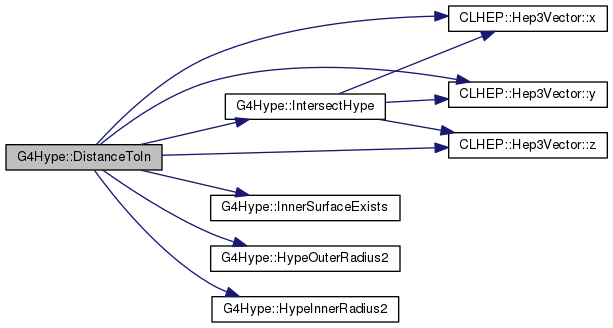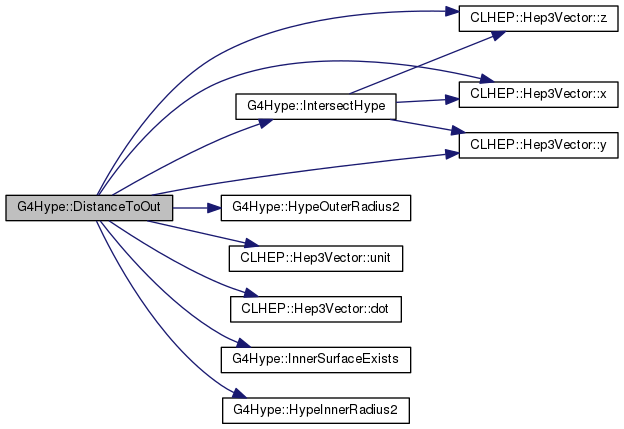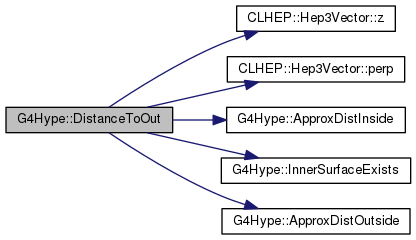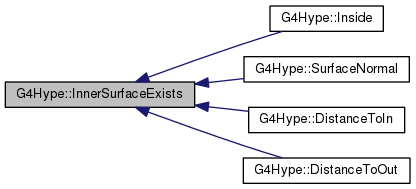|
Geant4
10.03.p03
|
|
Geant4
10.03.p03
|
#include <G4Hype.hh>


Protected Types | |
| enum | ESide { outerFace, innerFace, leftCap, rightCap } |
Protected Member Functions | |
| G4bool | InnerSurfaceExists () const |
| G4double | HypeInnerRadius2 (G4double zVal) const |
| G4double | HypeOuterRadius2 (G4double zVal) const |
 Protected Member Functions inherited from G4VSolid Protected Member Functions inherited from G4VSolid | |
| void | CalculateClippedPolygonExtent (G4ThreeVectorList &pPolygon, const G4VoxelLimits &pVoxelLimit, const EAxis pAxis, G4double &pMin, G4double &pMax) const |
| void | ClipCrossSection (G4ThreeVectorList *pVertices, const G4int pSectionIndex, const G4VoxelLimits &pVoxelLimit, const EAxis pAxis, G4double &pMin, G4double &pMax) const |
| void | ClipBetweenSections (G4ThreeVectorList *pVertices, const G4int pSectionIndex, const G4VoxelLimits &pVoxelLimit, const EAxis pAxis, G4double &pMin, G4double &pMax) const |
| void | ClipPolygon (G4ThreeVectorList &pPolygon, const G4VoxelLimits &pVoxelLimit, const EAxis pAxis) const |
Static Protected Member Functions | |
| static G4double | ApproxDistOutside (G4double pr, G4double pz, G4double r0, G4double tanPhi) |
| static G4double | ApproxDistInside (G4double pr, G4double pz, G4double r0, G4double tan2Phi) |
| static G4int | IntersectHype (const G4ThreeVector &p, const G4ThreeVector &v, G4double r2, G4double tan2Phi, G4double s[2]) |
Protected Attributes | |
| G4double | innerRadius |
| G4double | outerRadius |
| G4double | halfLenZ |
| G4double | innerStereo |
| G4double | outerStereo |
| G4double | tanInnerStereo |
| G4double | tanOuterStereo |
| G4double | tanInnerStereo2 |
| G4double | tanOuterStereo2 |
| G4double | innerRadius2 |
| G4double | outerRadius2 |
| G4double | endInnerRadius2 |
| G4double | endOuterRadius2 |
| G4double | endInnerRadius |
| G4double | endOuterRadius |
 Protected Attributes inherited from G4VSolid Protected Attributes inherited from G4VSolid | |
| G4double | kCarTolerance |
|
protected |
| Enumerator | |
|---|---|
| outerFace | |
| innerFace | |
| leftCap | |
| rightCap | |
Definition at line 183 of file G4Hype.hh.
| G4Hype::G4Hype | ( | const G4String & | pName, |
| G4double | newInnerRadius, | ||
| G4double | newOuterRadius, | ||
| G4double | newInnerStereo, | ||
| G4double | newOuterStereo, | ||
| G4double | newHalfLenZ | ||
| ) |
Definition at line 74 of file G4Hype.cc.


|
virtual |
|
staticprotected |
|
staticprotected |
|
virtual |
Implements G4VSolid.
Definition at line 246 of file G4Hype.cc.

|
virtual |
Reimplemented from G4VSolid.
Definition at line 1124 of file G4Hype.cc.

|
virtual |
Reimplemented from G4VSolid.
Definition at line 212 of file G4Hype.cc.

|
virtual |
Reimplemented from G4VSolid.
Definition at line 1306 of file G4Hype.cc.

|
virtual |
|
virtual |
Implements G4VSolid.
Definition at line 355 of file G4Hype.cc.

|
virtual |
Implements G4VSolid.
Definition at line 650 of file G4Hype.cc.

|
virtual |
Implements G4VSolid.
Definition at line 731 of file G4Hype.cc.

|
virtual |
Implements G4VSolid.
Definition at line 902 of file G4Hype.cc.

|
virtual |
Reimplemented from G4VSolid.
Definition at line 223 of file G4Hype.cc.


|
virtual |
|
virtual |
|
virtual |
Reimplemented from G4VSolid.
Definition at line 1293 of file G4Hype.cc.
|
inline |

|
inline |

|
inline |

|
inline |

|
virtual |
Reimplemented from G4VSolid.
Definition at line 1179 of file G4Hype.cc.

|
virtual |
Reimplemented from G4VSolid.
Definition at line 1316 of file G4Hype.cc.

|
virtual |
|
inline |



|
inlineprotected |

|
virtual |
Implements G4VSolid.
Definition at line 265 of file G4Hype.cc.

|
staticprotected |
|
virtual |
|
virtual |